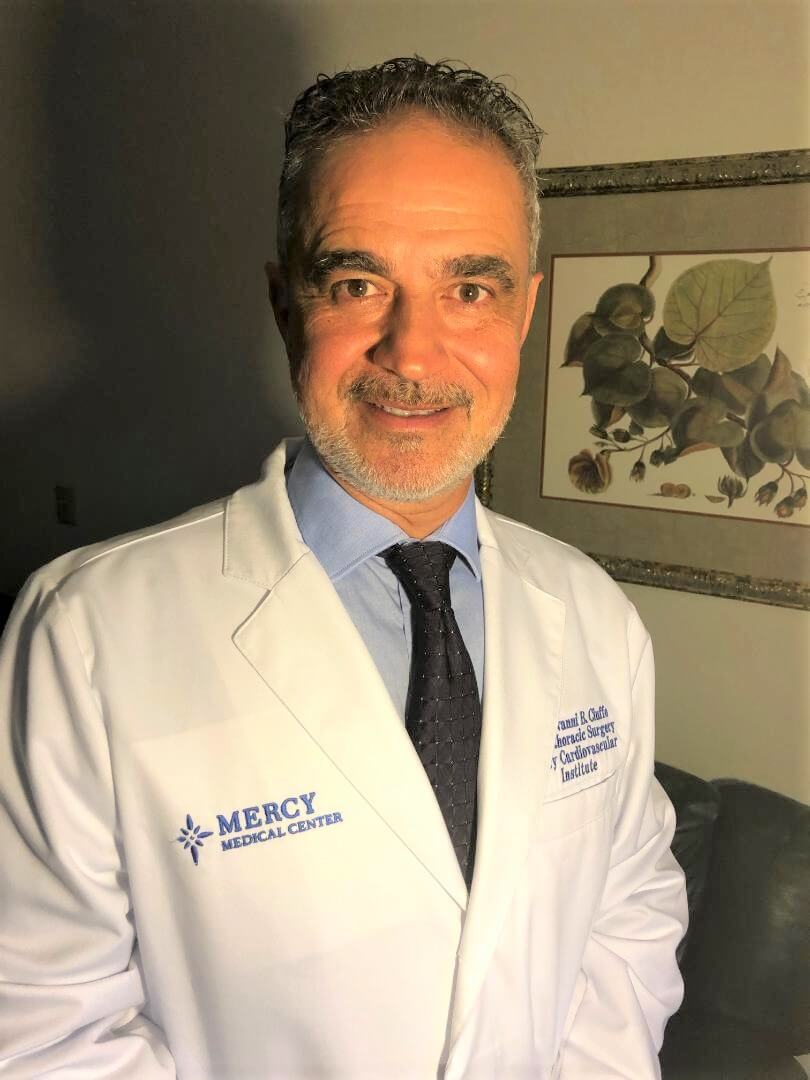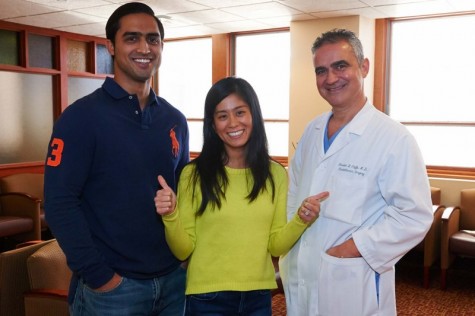Dr. Ciuffo’s Professional Journey Toward Bloodless Heart Surgery & Better Surgical Care
“My interest in developing bloodless heart surgery techniques bloomed early in my professional career. I have always been interested in offering my patients the best, low-impact, minimally invasive heart surgery available for their heart disease.The adoption of bloodless heart surgery techniques is an important aspect of the care of the cardiovascular patients. I started to employ these techniques in the late 90’s to comply with the religious beliefs of the Jehovah’s Witness congregations first in Pittsburgh and in New York City. Now, bloodless techniques are more common in my specialized national referral center for bloodless heart surgery. The science behind no-blood surgery has made impressive progress over the last decade and it is now possible to offer this option routinely in the vast majority of our patients.”-Dr. Ciuffo

How Is Bloodless Heart Surgery Accomplished?
Over the years Dr. Ciuffo has developed very effective clinical strategies and routines that have made bloodless heart surgery a reality for most of our patients. Bloodless heart surgery care is an increasingly popular choice for all patients that need surgery in a growing number of medical institutions. It is interesting to note that more and more patients are becoming interested in bloodless heart surgery, regardless of their religious beliefs. It turns out that avoiding the transfusion of blood products has significant clinical benefits related to the following steps:
- A careful preparation of each patient for bloodless heart surgery
- A precise and meticulous technique during surgery
- A thorough postoperative follow-up
- The avoidance of potential side effects and complications related to blood transfusions
Recent literature confirms better postoperative longevity in patients that did not receive a blood transfusion at the time of surgery. The clinical data corroborates our efforts to pursue bloodless techniques in every patient to improve their long term outcomes of a longer and better life
Step One - Preparation Before Surgery
We investigate any evidence of spontaneous bleeding or anemia. The most common causes of chronic anemia are related to bleeding from ulcers in the stomach or intestine, bleeding from diverticulosis, heavy menstruations, primary anemias. A hematology or gastroenterology evaluation can be requested as necessary.
All medications that can cause bleeding are discontinued (i.e.:aspirin, coumadin, plavix, fish oil, certain herbal remedies and vitamin E), if medically safe. Many popular supplements that are good for the heart have an underlying blood thinning effect and sometimes patients are not aware of it. Most supplements can be resumed after surgery when cleared by the treating surgeon.
Medications such as Erythropoietin or Darbepoietin, Iron, and Folic Acid are given to stimulate the patient’s own production of more red blood cells, if indicated. Ideally each patient considered for elective surgery should be treated to ensure a healthy hemoglobin level. Keep in mind that Epogen needs at least 7 to 10 days to work its effect and stimulate red blood cell production. If a patient is anemic, it might take at least a few weeks and several shots of Epogen to get an optimal hemoglobin level before elective surgery.
We discuss in detail which blood fractions, if any, are acceptable to the individual patients.
A surgical strategy is planned to minimize the risk of bleeding while accomplishing a complete, thorough treatment of the heart condition. Beware of incomplete surgical treatments suggested by surgeons and cardiologists that are not familiar or comfortable with bloodless techniques. Let me give you a specific example: if you are diagnosed with a serious heart valve problem and coronary disease DO NOT settle for a planned coronary intervention that does not address the valve problem. A refusal of blood transfusions does not preclude a complete and thorough surgical therapy in Jehovah’s Witnesses.
Step Two - Blood Sparing Techniques
- Use of minimally invasive bloodless cardiac surgery techniques whenever possible to avoid breast bone cutting and its increased chance of postoperative bleeding. The picture below shows you a surgical scar in a young Jehovah’s Witness from Florida who recently underwent a minimally invasive aortic valve replacement. The incision is placed between two ribs and heals very well. He recovered rapidly and was able to leave the hospital two days after surgery with an excellent hemoglobin level (13 grams!).
- Extra Corporeal Circulation (the heart-lung machine) with or without blood storage. The entire blood volume can be kept in circulation at all times, in compliance with the principles and beliefs of the Jehovah’s witness community.
- Beating Heart Surgery technique for coronary artery bypass. It avoids using the heart-lung machine and helps us maintain a better ability to coagulate and stop bleeding after surgery.
- Blood Salvage. A “cell saver” machine like the one in the picture below collects, filters and returns the patient’s blood to his/her own circulation. A closed circulation loop with no storage can be maintained at all times.
- Intraoperative hemodilution: some of the patient’s own blood can be removed prior to surgery and replaced with fluid. After surgery, the patient’s blood, is re-circulated into the patient’s body with the advantage of fresh, intact coagulation properties (not used in Jehovah’s witnesses because the blood needs to be stored out of the circulation for an hour or two)
- Careful cell saver recycling and rinsing of any blood absorbed in surgical pads and gauze during surgery. Many surgeons unfortunately do not pay much attention to what happens to those blood soaked surgical pads. A surgical gauze pad can absorb up 300 ml of blood which could be lost with the rest of the disposables if an effort to recover it is not routinely made. A considerable amount of blood can be returned to our patients by following the simple routine outlined in the pictures below. This way we can reach the end of the operation with virtually no blood loss.
1) A surgical gauze sponge is first rinsed in a bowl with sterile saline solution
2) As you can see, a fair amount of blood is now in the saline solution
3) The scrub nurse wrings out the gauze sponge
4) The blood and saline solution are suctioned into the cell saver where the red blood cells are washed, spun and returned to the patient in real time.
- Use of synthetic (not derived from blood products!!) topical hemostatic agents help control surface bleeding
- Hypervolemic hemodilution: the blood volume is diluted by adding saline solution during surgery and then reconcentrated at the end
- Hypotensive anesthesia: a controlled, lower blood pressure will cause less bleeding during surgery
- Intra-operative electro-cautery or argon beam blood vessel coagulation is used to minimize blood loss with meticulous attention to detail.
Step Three - Minimizing Blood Loss
Blood loss is minimized before and after surgery and Intensive Care Protocols are implemented to manage anemia
- Induced Hypothermia decreases the oxygen demands in anemic patients by slowing their metabolism. This will help stabilize anemic patients that need more time to reestablish a good hemoglobin level.
- Self-transfusing drainage systems allow us to immediately recover any postoperative bloody drainage in the immediate postoperative period.
- Tiny, pediatric test tubes are used to sample a smaller volume of blood and only for absolutely necessary tests. The picture below shows you the striking difference in size between pediatric and adult test tubes. Many hospitals are still obtaining daily “routine tests” that are not really necessary. This old-fashioned practice can actually cause anemia by drawing up to 20 to 25 cc’s of blood every day. If this is done during a long hospital day, it adds up to a significant blood loss. These mindless routines need to be promptly addressed and corrected as necessary. The attention to such details greatly improves our results in blood sparing strategies.
- Hyperbaric Oxygen Therapy: oxygen can be administered at a pressure higher than normal atmospheric pressure to increase oxygen content in a patient with profound anemia
Knowing more about heart surgery alternatives will enable you to make informed treatment decisions about your care and will encourage you to discuss all available care options with your doctor. Searching for all the right information will help you get the best results in heart surgery.

Jehovah’s Witness traveled the globe to receive bloodless heart surgery from Dr. Ciuffo.
Additional Benefits of Bloodless Heart Surgery
Avoid Severe Allergic Reactions To Blood Transfusions
Another major concern is the fact that a blood transfusion has profound effects on our body and its modulation of our immune system, sometimes manifesting as severe allergic reactions. Whether you receive your own blood or blood from an unrelated donor, the risk of an allergic reaction remains the same because an allergic reaction can occur if a patient is sensitive to the additives and preservatives used when storing the blood.
Stop An Inflammatory Response
Inflammatory responses are also seen in patients after a transfusion with accumulation of inflammatory fluids in various organs (lungs, kidneys, muscles) and soft tissues that effectively slow down the recovery period after open heart surgery.
Request A Consultation For Bloodless Heart Surgery
If you or a loved one is interested in further information about minimally invasive, bloodless heart surgery that will align with your religious beliefs and health concerns, please get in touch with Dr. Ciuffo of York, PA today. Call our office at (712) 294-7055 or contact us online. Dr. Ciuffo looks forward to helping you move toward living a better, healthier life.
